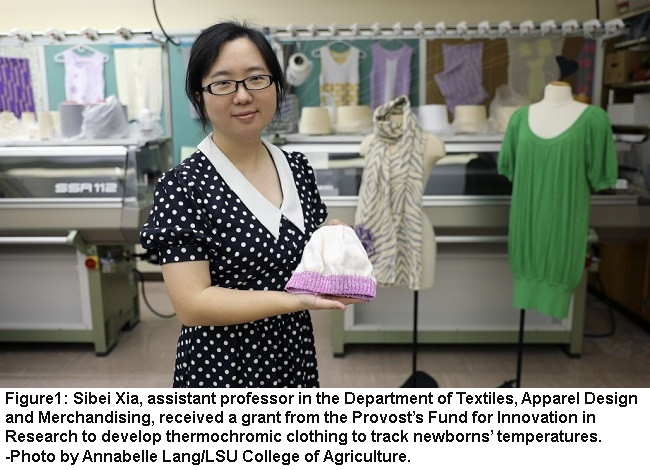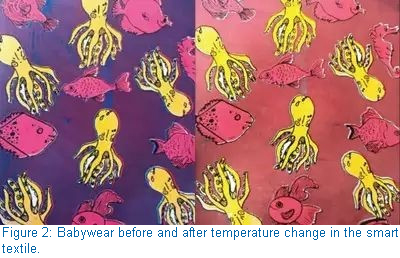
Category: TECHNOLOGY AND INNOVATION
Country: United States
Region: Asia and USA
By Saiful Saad
31st March, 2024 10:59 AM
Researchers are developing body-tracking wearable technology, or smart clothes, through thermochromic yarn that changes color based on body temperature. The apparels will monitor the infant’s temperature. Its threads will change colors to alert others if there is a temperature spike.
New color changing babywear to help infants indicating symptoms of fever
Sibei Xia is investigating the feasibility of using ‘smart clothing’ to monitor the core body temperature of infants at Louisiana State University (LSU). Newborn temperature monitoring using thermometers and other intrusive devices may become unnecessary with the use of thermochromic technology.
The headgear can take the baby's temperature. When its temperature rises, which is likely due to a fever, its threads will change color to let others know. Putting the baby to sleep for longer periods of time between temperature checks is another possible benefit of the headgear.
A band made of a combination of functional and cotton yarn is used to monitor temperature without compromising the comfort of these hats. Utilizing the department's flatback knitting machines, the hat's prototype was created. To achieve the intended color-changing effect, the research investigates various combinations of yarn colors, knitting structures, and threshold temperatures.

When the yarn reaches its threshold temperature, it will begin to change color. At around 36 degrees Celsius, Xia's prototype’s color shifts from purple to beige.
Thermochromic and photochromic fabrics have long been popular in swimwear and fitness apparel, but students at the National Institute of Fashion Technology (NIFT) Gandhinagar applied these concepts to a wide variety of products, including swaddling garments, military fatigues, children's toys, and curtains.
Similarly, infant and children's clothing can serve as a visual cue for changes in core temperature, such as a fever. Additionally, they have astutely included many color-changing choices, including pigments that possess both photochromic and glow-in-the-dark characteristics. Because of this, the backdrop goes from white to a deep yellow in the middle of the day, casting more shade as the temperature climbs. Similarly, at night, the radium prints that result from heat absorption become visible.
Courtesy: Textiletoday.com
Copyrights © 2025 GLOBAL TEXTILE SOURCE. All rights reserved.